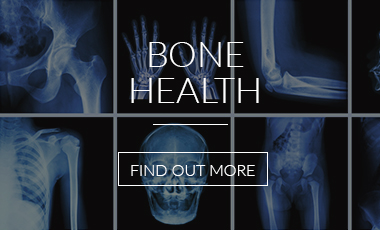A prompt diagnosis and clear management plan can prevent unnecessary loss of time from sport and general activity. Some injuries are complex. Customised care is important.
People across all age ranges consider sport to be a large part of their life. Whether you are an elite athlete, or you are just trying to stay fit, the impact of an injury can be significant not only physically but psychologically too.
Why injuries happen
Common causes of sports injuries can be divided into intrinsic factors and extrinsic factors.
Intrinsic factors involve aspects of your physical makeup: a number of biomechanical factors, flexibility (too much / too little), strength (muscle imbalances or weaknesses), leg length differences, posture, foot shape and movement during exercise, and others.
Extrinsic Factors include aspects of your training/exercise programme, technique, equipment, surfaces upon which you are training on, and environment.
Identifying these factors is important, since many can be changed to speed recovery and prevent recurrence. Sometimes it is obvious, but you may need a trained eye. The use of video analysis, gait assessment and input from a coach or one or more members of a sports medicine team may be helpful.
Treating sports injury
If untreated the injured area may become more painful, weak, inflexible and unstable and participation in sports may become more difficult.
You can reduce the risk of injury by the following steps:
Get fit for your sport – Basic fitness training can help you to perform better, safer and more enjoyably. Typically this involves some aerobic exercise (such as walking, jogging, cycling) and some strength training.
Stretching – Warming up by starting the activity slowly and building up over 10 minutes, then stretching gently and correctly does help to reduce the risk of injury.
Make sure there are no ‘weak links’ – If you know you have a weakness or slight injury – even if not caused by sport, then consult with a physician or physiotherapist about it.
Avoid ‘too much, too soon, too often’ – Being enthusiastic about a sport or keen to get fit can result in you trying to do too much. Avoid sessions that are excessively long, too intense or too frequent. It is sensible to vary what you do so that you do not try to repeat the same thing from one day to another. This also prevents boredom from setting in!
Rest – Muscles and tendons do need time to recover and a rest day or two per week is helpful rather than harmful. Do not use it as an excuse to lie on the couch – find other activities to do such as a gentle swim, walk, gardening – or even cleaning the house!
Get advice – Experience is a key factor in staying fit and injury-free long term. If you need advice even on basic issues, never feel embarrassed to ask a professional.
Equipment – Make sure you are adequately equipped for your sport. The wrong tennis racket, the wrong shoe, etc. can make all the difference. Do not be fooled into thinking that the most expensive item is always the right choice.
Technique – Sometimes the technique you are using (e.g. golf swing) can be at fault. An instructor can spot subtle errors and make a bid difference both to your performance and your injury risk.
Diagnostic tools in the assessment of sports injuries include:
- Ultrasound scanning
- X-ray
- Magnetic Resonance Imaging (MRI)
- Computed tomography
- Gait analysis
- Isokinetic strength and power assessment
Then a management plan can be formulated that returns the patient back to their sport quickly and safely.
Customised plans are most effective at achieving this, as everyone responds differently to injury and treatments.
Treatment plans include:
- Programmes to maintain fitness whist the injury recovers
- Rehabilitation
- Biomechanical adaptations
- Supplements
- Medications where needed to promote pain relief and to optimise healing
- Injection therapies (including natural remedies to joint and soft tissue lubricants)
- Surgery





